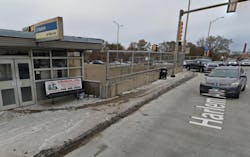Study looks at economic, traffic benefits for I-290 improvements in Chicago
Proposed improvements for a 13-mile stretch of I-290 between I-94 and the I-88/294 interchange in Chicago would create more than 22,000 jobs, reduce traffic congestion, and enhance access to jobs, according to a new study by the Illinois Economic Policy Institute (ILEPI).
The $2.7 billion project, which combines transit and pedestrian improvements alongside bridge and roadway upgrades, is projected by the Chicago Metropolitan Agency for Planning (CMAP) to provide amongst the best economic, equity, and traffic impacts of any project in the region by 2050, according to a press release from ILEPI.
“The I-290 corridor is vital multi-modal infrastructure that’s needed to connect the western suburbs and southern Cook County with the City of Chicago, but it has far exceeded its design life and become one of the most congested and dangerous thoroughfares in the region,” ILEPI Transportation Director and study author Mary Tyler said in a statement. “That said, its proposed modernization represents one of the region’s greatest opportunities to create jobs, reduce traffic burdens, and alleviate the economic access burdens facing disadvantaged communities.”
ILEPI says as much as 90% of the project’s existing pavement structure is original and exceeds the normal roadway design life of 25-30 years. Of its 44 bridges, 34% are considered “structurally deficient” and 86% are “functionally obsolete,” according to Illinois Department of Transportation (IDOT) data. According to CMAP, vehicle traffic on the stretch has increased by more than 16% since 1984.
The proposed I-290 reconstruction project incorporates not only bridge and highway upgrades—including a new High Occupancy Toll lane (HOT3+) to support Express Bus service and promote carpooling—but also wider sidewalks, pedestrian safety islands, high visibility crosswalks, lighting, and signals to better facilitate pedestrian/bicycle traffic and transit riders.
A concurrent CTA project would upgrade Blue Line transit facilities, including reconstruction of the entire Forest Park Branch as well as stations from UIC-Halsted to Forest Park and six substations.
By 2050, CMAP projects the project will reduce travel times by 25-56%, while increasing the number of jobs within 45 minutes of each household in the region by more than 17,000.
The study examined the potential overall economic impact of the project, concluding that it would create nearly 22,000 new jobs paying an average of almost $80,000 per year, while growing the economy by more than $2.6 billion and boosting local, state, and federal tax revenues by more than $450 million.
-----------
SOURCE: Illinois Economic Policy Institute
